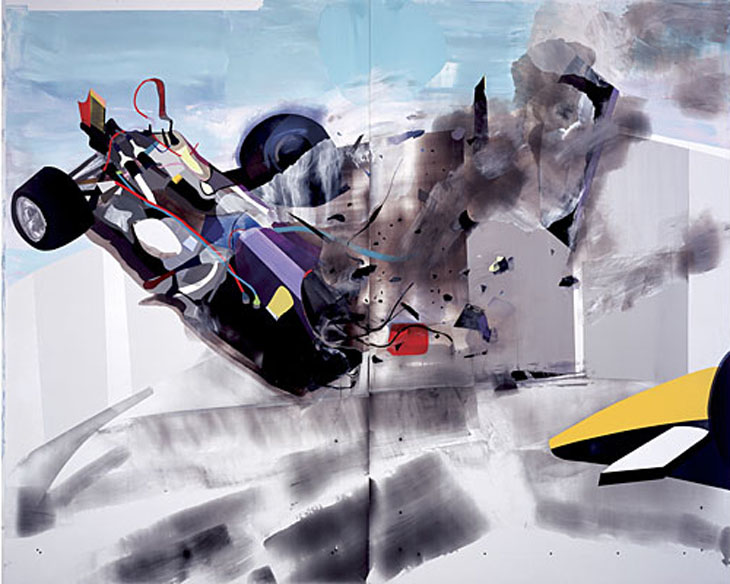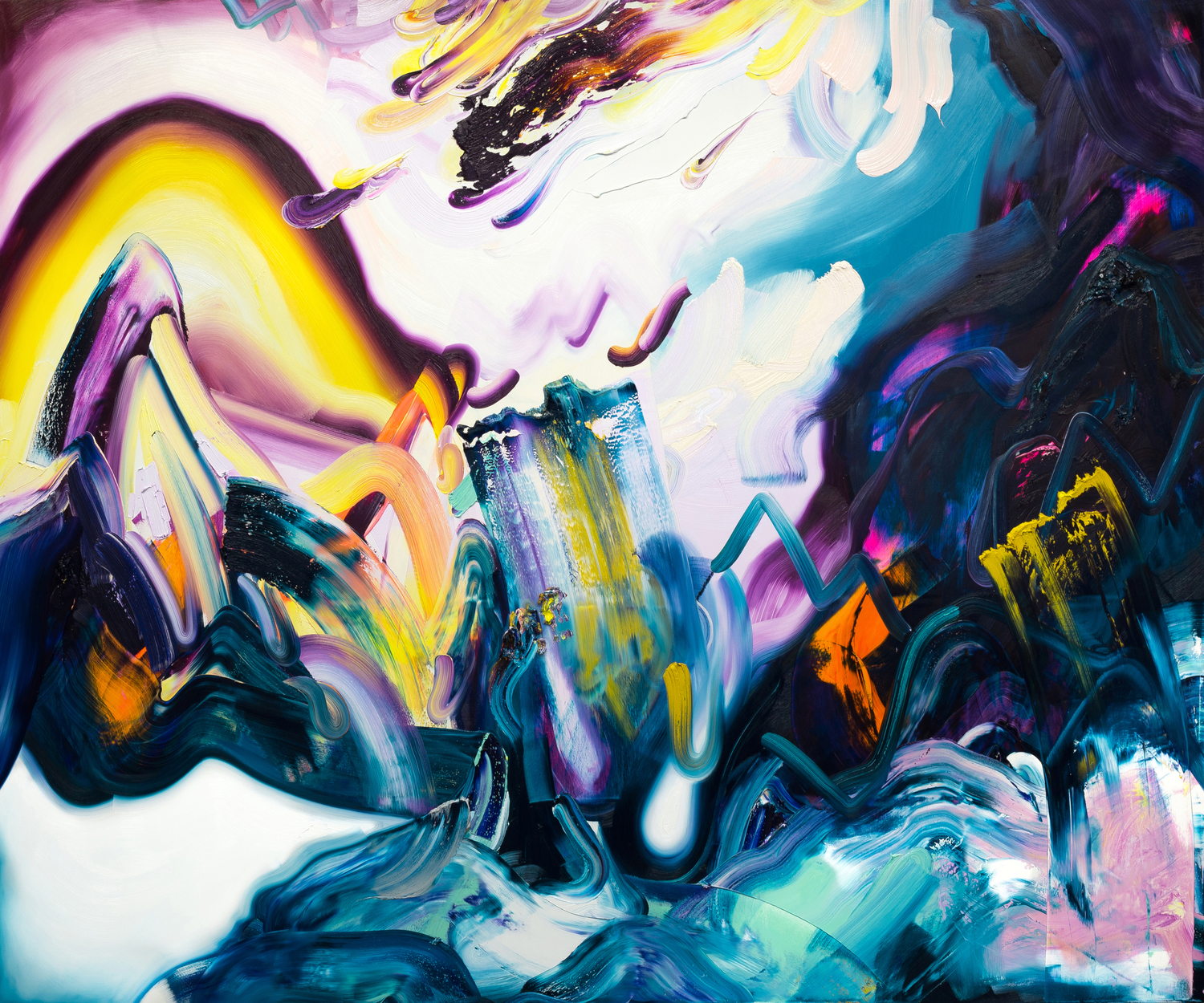By Randy Gladman
The crowd at Deitch Projects, one of the few vital galleries in SoHo to have resisted the exodus to Chelsea, had already spilled out onto Grand Street by the time I arrived. This was the first Friday of the 2003 art season and a grand tour of openings had lead me through scores of packed art houses further West. Deitch openings, of course, attract a different sort of crowd, one that has more to do with the pinnacle of youth style than contemporary art, and tonight was typical; hipsters with trucker caps and the electroclash kids were out in force. I wondered if they were here because they are fans of Kristin Baker, a recent Yale MFA grad whose New York City debut solo exhibition glistened on the walls inside, or if some mutant sense of high style had attracted them like moths to this most fashionable of parties.
As I was crossing the street, the roar of a muscle car approached rapidly from the direction of Thompson Street. It was already dark and all I could see to match the aggressive growl were two headlights speeding towards me at a terrifying clip, now less than a block away. As I leaped onto the curb the 1968 red Cobra flew past, the driver’s blur of blond hair swishing in the wind. I turned to hurl caustic vitriol at the driver. “What’s wrong with you, asshole?!? This is SoHo, not Daytona!” But my admonishing yell was completely drowned out by the sound of the engine gurgling past and the surprising cheers of the hipsters with whom I now found myselfstanding. At first I though they were applauding the driver for trying to splat me like Frogger as I tried to cross the street, but their cheers and cat calls continued as the vintage sports car flew down the block. What the hell is going on, I wondered.
Snaking my way through the packed gallery, I caught enough snippets of random conversations to learn that Baker herself was driving the car that almost ran me over. She had been dragging down Grand Street in the Cobra and in an equally muscular and gorgeous Charger all evening, offering thrill rides as extra entertainment for those who had turned out for the opening. This was classic Deitch sensational showmanship and the audience was drinking it up, along with the free beer.
But I was here to see Baker’s paintings. Never using brushes to create her works, she wields knives, normally a tool of deconstruction and violence, to construct worlds of speed and elegant tragedy. In works like Big Bang Vroom and Boom Boom No. 1, Hockenheim, her contemporary landscapes focus on racecars as they tear around the track and smash into smithereens during high velocity collisions. The narratives depicted on these monumentally scaled PVC boards freeze crucial fragments of time, the exact nanosecond when wild destruction occurs and God decides if the racecar driver will live or die. With raucous hues lifted from Formula One bodies and flat aesthetics derived from high tech auto shop tool logos, she causes atomic moments of adrenaline-soaked fear to leaven into lingering operatic drama. She grafts aggressive planes of luxurious, thinly sliced acrylic onto a visual language that lies halfway between pure abstraction and high-speed photography, revealing a near missionary reverence for motorsports.
Less than a week after the opening of the exhibition, New York City mournfully remembered September 11 on the second anniversary of the infamous attack. Once again, images of the destruction of that horrible day proliferated through all forms of media, the most famous and memorable of which depicts an airliner frozen in the nothing-but-a-moment of its impact with the skyscraper. This image is burned onto our collective memory like a cattle brand, a powerful icon of fear and destruction that defines our era. It grasps our imaginations like a car crash on the side of the highway. We cannot look away. Baker’s videogameish, pixilated sportscapes tap into a parallel iconicpower. There is irresistible magnetism to the energy with which she injects the stories she tells. We are drawn inexorably into their narratives. We can’t look away.
By Randy Gladman. Originally published in NY Arts, March/April 2004.


